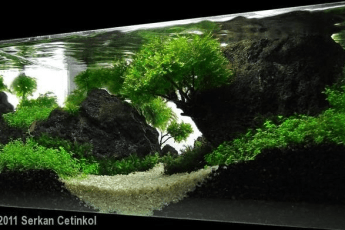Aquascaping, the art of designing and arranging aquatic elements within an aquarium, has evolved into a sophisticated form of artistic expression. Among the many principles guiding aquascape design, the concepts of natural flow and lines play a pivotal role. In this article, we delve into the intricacies of natural flow and lines in aquascaping, exploring how these principles contribute to creating captivating underwater landscapes.
Understanding Natural Flow:
Natural flow in aquascaping refers to the seamless movement and arrangement of elements within the aquarium, mimicking the organic patterns found in nature. Achieving natural flow involves careful consideration of various factors, including water circulation, plant and substrate placement, and the overall layout of the aquarium.
Water Circulation:
Efficient water circulation is fundamental to creating a natural flow within the aquarium. Proper water movement not only ensures oxygen distribution but also influences the way plants and other elements sway in the current.
Aquarists often use strategically placed powerheads or circulation pumps to simulate gentle currents, fostering a more natural environment for aquatic life.
Plant and Substrate Placement:
Selecting the right combination of aquatic plants and arranging them according to their growth habits is crucial for achieving natural flow. For example, taller plants may be placed towards the rear, gradually transitioning to shorter ones towards the front, resembling the layered structure found in natural aquatic environments.
The substrate’s composition and contour also contribute to the overall flow. Sloping substrates can create depth and simulate underwater topography.
Layout Harmony:
Natural flow is enhanced by creating a harmonious layout where elements seamlessly transition from one to another. This involves a thoughtful arrangement of rocks, driftwood, and other hardscape materials to mimic the randomness of nature.
Avoiding abrupt transitions and creating focal points can guide the viewer’s eye through the aquascape, contributing to a more natural and visually pleasing flow.
Exploring Lines in Aquascaping:
Lines are visual pathways that guide the viewer’s gaze through the aquarium, providing a sense of continuity and balance. There are various types of lines that aquascapers can utilize to enhance the aesthetic appeal of their designs.
Horizontal Lines:
Created by the placement of rocks, driftwood, or the waterline itself, horizontal lines evoke a sense of tranquility and stability. These lines often mimic the horizon and contribute to a calming effect within the aquascape.
Vertical Lines:
Created by tall plants, rocks, or vertically oriented driftwood, vertical lines add height and a sense of strength to the aquascape. These lines can be strategically placed to draw the viewer’s eye upward, creating a dynamic and visually engaging composition.
Diagonal Lines:
Diagonal lines add a sense of movement and energy to the aquascape. They can be created through the arrangement of hardscape elements or the intentional placement of plants with diagonal growth patterns.
Curved Lines:
Curved lines introduce a sense of grace and naturalness to the aquascape. They can be created using driftwood, plants with flowing leaves, or carefully arranged substrate contours. Curved lines soften the overall design and contribute to a more organic feel.
Conclusion:
In the world of aquascaping, the principles of natural flow and lines serve as the guiding forces behind the creation of stunning underwater landscapes. By understanding and implementing these concepts, aquarists can transform their aquariums into living works of art, captivating viewers and providing a harmonious environment for aquatic life. As the art of aquascaping continues to evolve, the exploration of natural flow and lines remains a fascinating journey for enthusiasts and artists alike.



